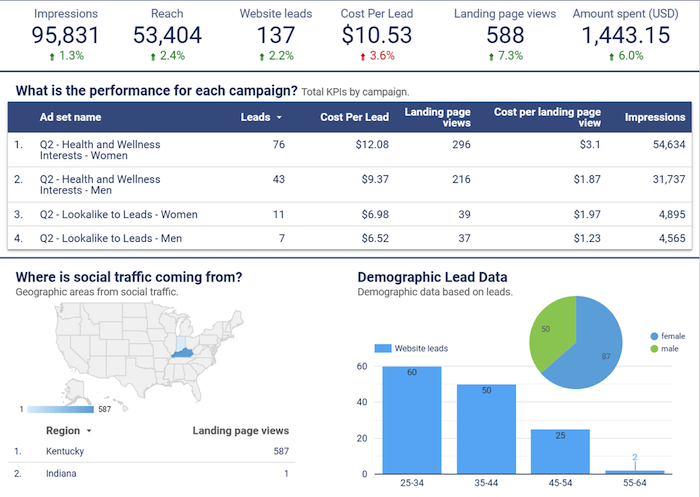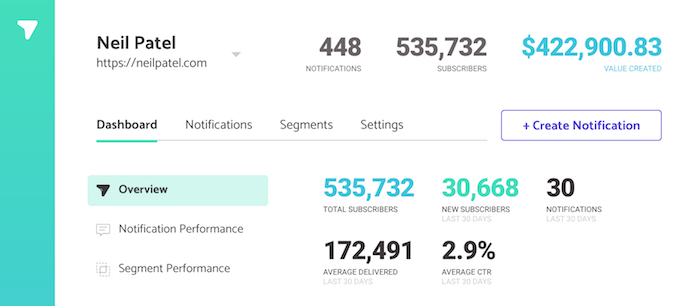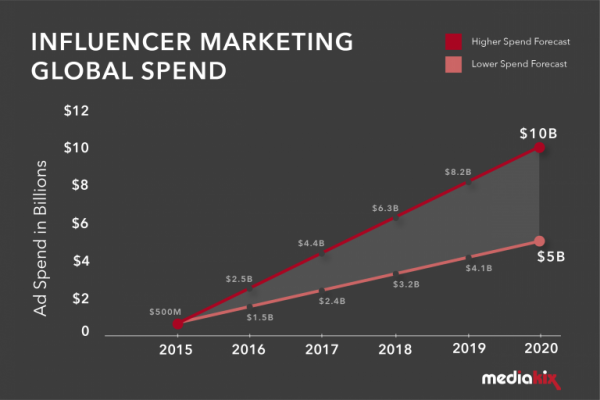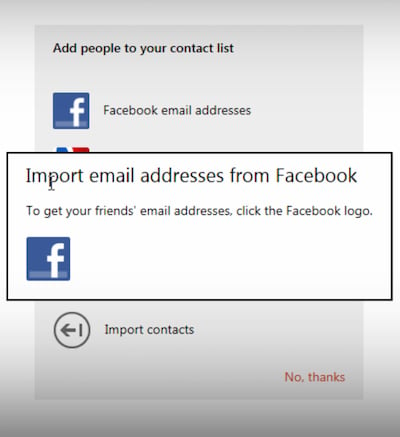MARKETING
Marketing Trends for 2020: Here’s What Will Happen That Nobody is Talking About

The new year is right around the corner. And I know you are already prepared because you read this blog and tons of other marketing blogs, right?
But here is the thing: I also read most of the popular marketing blogs, follow all of the marketing YouTube channels, and listen to the same podcasts you do.
And I’ve noticed that very few people are talking about what’s really going to happen in 2020.
Sure, they will tell you things like voice search is going to account for over 50% of the search queries next year but all of that stuff has already been talked about.
And there are actually more interesting trends that will affect your marketing that no one is really talking about.
So, what are these trends? What’s going to happen in 2020?
Alright, here goes…
Trend #1: Companies who rely on Google Analytics will get beat by their competition
We all love Google Analytics.
Heck, I love it so much I log in at least 3 or 4 times a day. And here is the kicker: I get so much traffic that my Google Analytics only updates once a day.
I really need to break that habit but that’s for another day.
You are probably wondering, what’s wrong with Google Analytics?
There actually isn’t much wrong with it. It’s a great tool, especially considering that it’s free.
But here is the thing… marketing has been changing. New channels are being constantly introduced, such as voice search.
And transactions no longer are as simple as someone coming and buying from you and that’s it.
These days there are things like upsells, down sells, repeat purchases, and even checkout bumps. On top of that, there are so many different ways you can generate revenue for your online business, such as partnerships, affiliate marketing, and even webinars.
This has caused companies to start using analytics solutions that tie into their database better, such as Amplitude. Or better yet, you are seeing a big push into business intelligence.
A central place where you can tie in all of your data and make better-informed decisions so you can optimize for your lifetime value instead of your short-term income.
In 2020, you will see more companies adopting business intelligence solutions… from paid ones to free ones like Google Data Studio.

If you haven’t checked out Data Studio, you’ll want to start now because it is easy to pass in all of your business and marketing data into one place. For example, you can pass in more granular data from your Facebook ad campaigns into Data Studio while that would be a bit difficult to do with Google Analytics.
Trend #2: Companies will optimize for voice search, but not for revenue
According to ComScore, over 50% of the searches in 2020 will be from voice search. But that’s not really a new trend… everyone has been talking about that for years.
So, what’s the big deal?
Optimizing for voice search is a great way to get your brand out more, but how is that going to convert into sales?
I haven’t seen too many solutions so far when it comes to capitalizing on your voice search traffic, but so far there is Jetson.ai.
If you aren’t familiar with Jetson.ai, it makes it so people can buy from your site using voice search. It doesn’t matter if it is Alexa or Google Home, they work with most of the popular devices.
For example, if I keep ordering the same toothpaste from a specific store using voice search, Jetson.ai keeps track of that so you can easily keep ordering the same product over and over again with little to no friction.
Heck, it’s easier than logging into your computer or pulling out your phone to make a purchase.
Trend #3: Your lists won’t convert as well, so you’ll have to look for alternative communication channels
Email, it’s something we all use in the corporate world.
But here is something interesting when it comes to marketing emails… I’m in a group with a bit over 109 email marketers across different industries in different parts of the world.
And can you guess what we are all noticing?
Our open rates are staying roughly the same and that’s largely because we all know how to clean and optimizing for deliverability.
But our click rates are going down.
So far as a group we have seen our click rates drop by 9.4% in 2019.
That’s crazy considering as a group we have over 146 million email addresses.
Now does this mean email is dead?
Of course not!!!
Email is here to stay and will be here for a very long time.
But what companies will have to do in 2020 is to leverage more communication channels.
Chatbots will take off drastically. Not necessarily the Intercom’s or Drift’s of the world but more so the solutions like ManyChat and MobileMonkey.
ManyChat and MobileMonkey leverage Facebook Messenger and as they connect it with Instagram and WhatsApp it will get even more popular.
In addition to chatbots, you’ll see more people leveraging tools that allow push notifications like Subscribers.
It’s so powerful, here is the impact I’ve been able to generate from push notifications so far using Subscribers.

You can wait till next year to lever chatbots and push notifications, but I’d recommend you start sooner than later. 😉
Trend #4: Moats will almost be non-existent, other than brands
You’ve probably heard the word “moat” before. If you haven’t, just think about water around a castle.

Back in the day, they had water all around the castle and they used a drawbridge to get in and out of the castle, so it would protect them from invaders.
With your business, you may have a moat. It could be a feature, your cost structure, a technological advantage, or even a marketing advantage.
Over the years, moats in the online world have slowly been disappearing.
It’s easy for anyone to copy these days. So, what’s separating you from your competition?
Something could work right now, but it won’t last forever…
But do you know what will still be a strong moat in 2020 and even a stronger one in the future?
It’s branding.
People buy Jordan shoes because they love Michael Jordan. His brand is stronger than ever even though he hasn’t played in the NBA for roughly 16 years.
His shoes are so popular, it’s helped him boost his net worth to over a billion dollars. Plus owning a basketball team doesn’t hurt either. 😉
But what’s interesting is he’s made more money after retirement than he did as a basketball player.
And it’s not just Jordan who built a strong brand… so have the Kardashians.
Kylie launched a billion-dollar company according to Forbes and it was all because of her personal brand. Her cosmetic company isn’t doing anything revolutionary. She just has a strong brand… and good for her for monetizing her brand.
The same goes for companies like Nike, Ferrari, Tesla, American Express… and the list goes on and on.
It’s why companies are spending over 10 billion dollars a year on influencer marketing.

Just look at my agency NP Digital. It’s literally one of the fastest-growing ad agencies out there. And when I look at all of my competitors’ numbers, we are growing at a much faster pace because of my brand.
Yes, we have a great team, but again, that really isn’t a moat as a lot of agencies have great teams. It’s my brand that gave us a really fast kick start and continues to hopefully push us up.
You’ll want to build a brand in 2020. Whether it is personal or corporate, it’s the best moat you can build in marketing. Plus, it will help you with Google’s EAT.
Trend #5: Marketing will become a more even playing field, you’ll have no choice but to use automation
When I first started off as an entrepreneur, I turned to SEO because I couldn’t afford the big ad budgets as my competitors.
Heck, I couldn’t even afford to run any paid ads.
Over the years, the playing field has become more level.
There are credit card companies like Brex that make it easier for startups to get approved for larger limits and you may not have to pay them back right away.
There are financing companies that will give you cash to spend on marketing, so non-venture funded companies can more easily compete.
There are even companies like Lighter Capital that will give you loans without all of the headaches based on your existing revenue.
And to top it off, software solutions are now starting to integrate AI to give better recommendations. From Clickflow and RankScience to Distilled ODN… everyone is trying to use AI to make SEO and other forms of marketing.
Heck, BrightEdge can even automate your SEO (or at least a large portion of it). According to them, their automated SEO solution increases page views per visit by 60% as well as provides 21% more keywords on page one.
Keep in mind their clients are really big (their software starts in the thousands of dollars per month) so they would probably see better results than most companies, but still, you will start seeing many more software companies leverage AI.
Even with Ubersuggest, I’m working on creating AI that does the SEO for you so you no longer have to spend endless hours while, at the same time, saving you thousands of dollars.
In other words, the marketing playing field is getting more even. And if you want to do well, you are going to have to leverage AI and automation.
If everyone else is using it and you aren’t, you are going to get crushed because it will make changes faster and more accurately than a human. Again, it’s the only option you’ll have if you want to continually compete.
But don’t worry, there will be affordable/free solutions that exist, it’s just a matter of time. 😉
If everyone is leveraging the same AI marketing technology, how can you beat your competitors?
Well, it will come down to everything else… price, customer service, upselling, operations, sales… All of the small stuff is what’s going to help you win.
Trend #6: There will be no more silver bullets, we will all have to optimize for marginal gains
A lot of businesses were built off of one marketing channel.
Dropbox grew through referral marketing. Invite more friends, get more free space.

Facebook was built off your email address book. Facebook used to tap into it and invite all of your contacts to use Facebook on your behalf.

Companies like Quora and Yelp were built off of SEO. All of those rankings really help drive their businesses.
But you no longer can build a business through just one marketing channel. Good channels now get saturated extremely fast.
Even if they work and cause explosive growth, it will only last for a short while before your competitors jump on board and make it harder.
Marketing is now heading in the direction of being about “marginal gains.”
There’s a British cycling coach named Dave Brailsford. His belief was that if you improved every area related to cycling by just 1 percent, then those small gains would add up to remarkable improvement.
And he’s right, that’s how you win a race.
The same will be with your marketing. There will be a big shift from people focusing on one channel and trying to find the “Holy Grail of marketing” to working on slightly improving each area of your marketing.
From split testing your title tags to get a few ranking improvements to adding checkout bumps to your order page so you can spend a little bit more on your paid ads to using Google Data Studio so you can better optimize for your lifetime value…
It’s all about the little things. That’s what is going to add up to winning.
That’s what you’ll have to shift your mindset to in order to win in 2020 and beyond.
Trend #7: Personalization is the new marketing
The problem with marketing as it exists today is that 95% of your visitors will never convert into a customer. And that’s if you are lucky.
Chances are you are more likely looking at 97% plus of your visitors never converting.
The big reason isn’t that your marketing sucks or that all of those visitors are junk and unqualified.
It’s that your message doesn’t fit every single one of your visitors.
But through personalization, you can convert more of your visitors into customers.
A basic example of this is Amazon. When you go to Amazon, they know your patterns and what you typically buy so they show you what they think you want to see in order to boost their conversions.
And it works! When I log into Amazon I see tons of household supplies because that is what I buy the most often. I never buy dog food (which is smart because I don’t have a dog) so I’ll never see ads for dog food.

Businesses are also trying to personalize each and every single experience both online and offline.
Companies like Amperity are trying to create a customer relationship engine so you can better serve each of your customers, whether it is online or offline.
Marketing is going to become a game of personalization. With ad costs and even general marketing costs rising, you have no choice but to figure out how to convert the 97% of your traffic that just never comes back.
You’ll see a big push for this in 2020.
Conclusion
I know a lot of the stuff I mentioned above isn’t talked about a lot and they aren’t popular marketing topics that everyone wants to hear… but it is the future.
These are trends that will come true, some already are, and you have to adapt for them.
Here’s the beautiful part, though. You just read this, and now have a chance to act on the information before your competition. So, make sure you go and do so.
I want to see you not only succeed but I want you to beat your competition. And I believe you can, whether you are a big company, or just starting off with very little to no money.
So, what do you think of the trends above? Do you see any marketing trends that will come true in 2020 that few people talk about?
Neilpatel.com


















